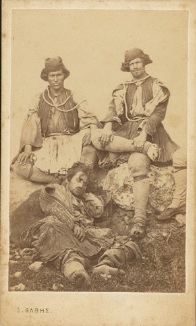Greek Kamaki
Uneven Love from
d. kondylatou on
Vimeo.
Kamaki includes practices of exchange. Kamaki also raises the competition between the kamakia. Kamakia use very specific phrases and specific tactics, depending on their target. The practice of kamaki reproduces many social stereotypes. It involves cultural techniques that have shaped a specific identity for certain locations (eg Rodos), mainly during the 80s, that however are still performed on a national level and that have consolidated throughout the years, a certain type of man, the macho-casanova-bumpkin guy.
There are two main problems in this process, no matter if it considered by some as nostalgic or picturesque. First of all, there is severe sexism, as it is a male practice -rarely it is the other way round- that presupposes a kind of passivity, from the female side, reproducing in this way, old and conservative traditional stereotypes. Secondly, it can be considered as a(n) (self-) exoticizing method of commodification, since this process has actually created a specific cultural approach to holidays in Greece.
Together with some islands of the mediterranean european countries, mainly the Ibiric peninsula, Greece is apparently one of the most exotic destinations in Europe -if there is such thing as “exotic” in Europe. Greece has been repeatedly exoticised as the country with the white ancient temples and the sun-burnt, illiterate, poor yet gentle and hospitable residents, as the country with the crystal blue seas and the white beaches, rare to find in Europe, as the country of entertainment and constant eating/drinking/dancing, as the country of the greek lovers and the know-how-to-enjoy-life people, as the country of coffee and cigarettes, as the country of the sun, as a country to live a myth in.
The tourist industry makes profit by advertising and selling all these aspects of Greece and many more, while it also contributes to the emergence of new types of tourism that are either diachronically maintained, or transformed into other types.
This project tries to investigate, through the paradigm of "kamaki", the interactive relationship of tourism with the construction of (the national) identity, having as a starting point the recent interest shown upon Greece for its supposedly political resistance against an implacable technocrat: Europe, that is overemphasized in the case of the greek art scene.





















































